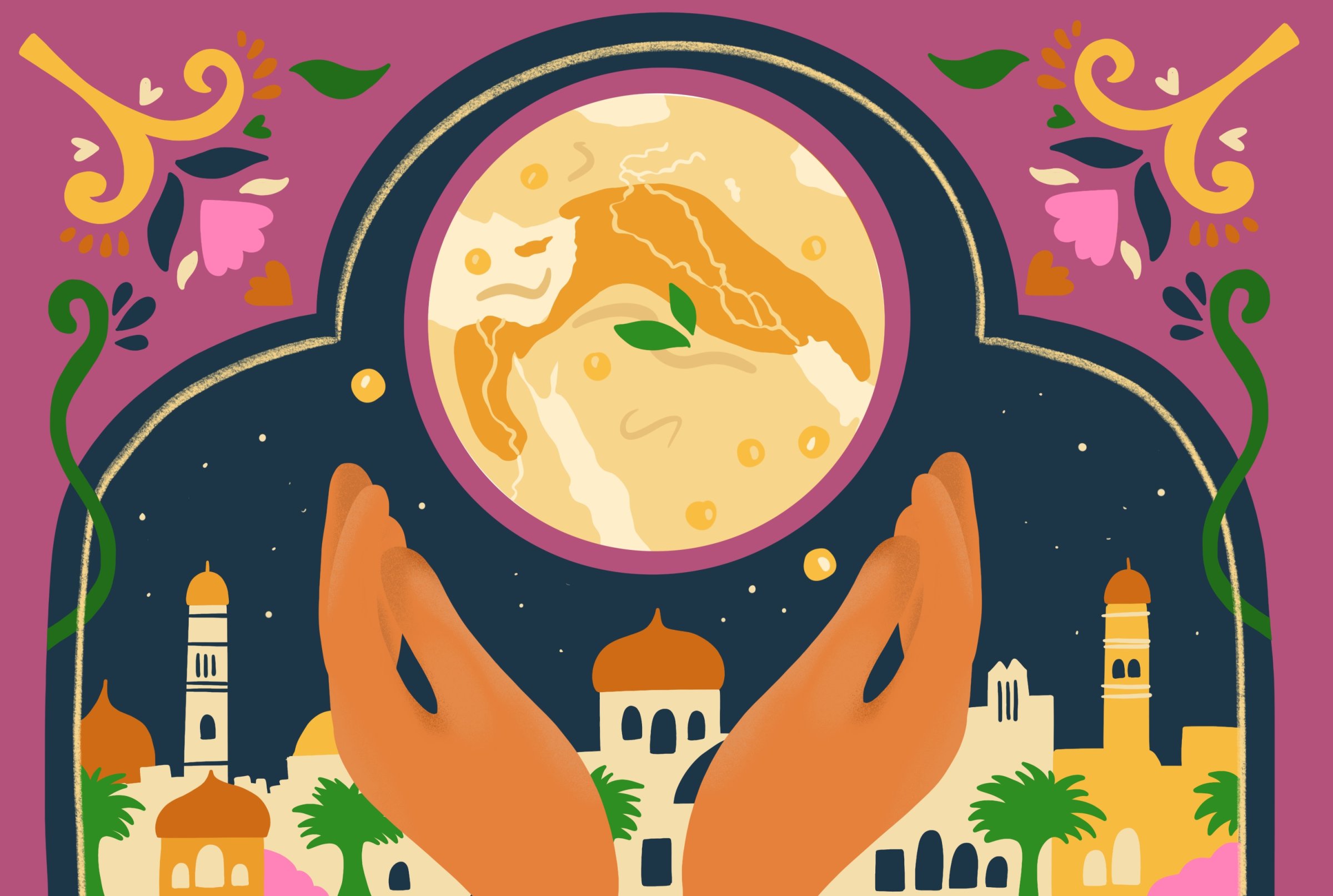Not long ago, I stopped referring to one of my most cherished Koshersoul recipes of black-eyed pea dip as "hummus." In Arab cultures, hummus is seen not just as a legume or chickpea dip—but as a sacred offering from one of the world's most ancient regions, the Fertile Crescent. In the shadow of the darkness that is "chocolate hummus," listening to Arab and other Middle Eastern voices from the Levant forced me to confront my lazy acceptance of a generalized eponym useful for Western gloss. The thought swirled in my mind beside one of my other pet peeves: when people deem "okra" as a nonspecifically "African word." This not only reduces the diversity and richness of African languages and cultures, but also makes the deep connections between Africa and the subsequent diaspora in the Americas more murky. These maladaptions allow us to miss the point of our uniqueness and necessarily multicultural world.
In times of national pain, and even international pain, there is constant appeal to a generic "human" lens through tired cliches and platitudes meant to be panaceas—the worst of which is that "food brings people together." We say this hoping that by setting the table, we've done the work. But we still need to actually go out there and do it. While food, indeed, has an incredible capacity to serve as a bridge to dialogue, it’s important to remember that it doesn't do anything that our meaning won't allow it to do. Intention is key to food; for food is a story—if we choose to tell it.
Food is not only personal. It is communal. Whatever work it does starts with helping us understand our location and purpose. Food reminds us of the boundaries, taboos, and lessons learned across historical truths and traumas; for how pastrami got put together with white bread and mayonnaise, or what beef curry symbolizes when it is served to members of the Hindu Brahmin caste, or why raisins are now a staple of a soul food-style potato salad all need context. They all have differing degrees of rule-breaking, but they all come with the understanding that ingredients can float in and out of many cultures.
Read More: 9 Food Trends to Ditch in 2024
Social media skirmishes over who owns what recipes or cuisines rarely take into consideration that food has navigated and stood the test of many different iterations of power: from the aromas we salivate over to the colors we splash on our plates, these are ancient choices that showcase just how dysfunctional and ever-growing we as humans have become. The closer we are as kin, the more likely it seems we are to spar over whether it is sumac, or mint, or perhaps dill that is from the Mediterranean, or Northern Africa, or Southwest Asia—or whatever region your favorite version of salad might be from.
Particularly in American food, communities outside the usual salt and pepper binary all have something valuable to say about how we eat, even if we fail to appreciate them. The voices of others, including women, take a backseat in a food world that is still white, male, overwhelmingly straight, and most importantly, designed for profit, from field to restaurant kitchen, on the backs of marginalized peoples.
Want to learn more about how we eat and drink now? Get guidance from experts:
We must make space for people with multiple societal roles and identities to navigate their personhood and relationships to food, and in turn, their culture. As a descendant of enslaved Africans living in the Americas, I’ve always said that "our food is our flag"—and just as flags have a tapestry of narratives that tell us about a people's aspirations, struggles, and pride, so too do our plates. When I look at the food on my Shabbat table as a Black, gay, Jewish man of Southern heritage, even if I didn't say a word, it would still have the potential to tell stories about joy, hope, survival, contradictions, unresolved traumas, and migrations. The food I make also has scintillating possibilities for variation and upgrade—and maybe even conversation that leads to understanding. Food can be the tool to bridge the chasms of -isms. Because we need it to be.
Read More: Michael W. Twitty on 2022 TIME100 Next
Some might read this as a call to a particular type of gastronomic “wokeness.” Most people who freely use that word can rarely define it quickly, so with purposeful critique, I’d like to, instead, offer a call for all of us to strive towards a more tangible, delicious goal: To understand the dimensions of our food on its many levels and intersections, because that makes our food taste better. The mental and spiritual satisfaction that comes from knowing what good food is and how food can be good for our minds and hearts is irreplaceable. Liking a taste for mere gustatory savor and liking food because it gives us access to human stories and community do not have to be mutually exclusive—they can share space in our lives.
If our food already does the extra work of giving us greater connection, food also has the possibility to both heal ancient divisions and move us towards one another. With this unique opportunity, we may just be back to the original purpose of our meals: not only to relieve hunger, but to nourish civilization.
More Must-Reads From TIME
- The 100 Most Influential People of 2024
- Coco Gauff Is Playing for Herself Now
- Scenes From Pro-Palestinian Encampments Across U.S. Universities
- 6 Compliments That Land Every Time
- If You're Dating Right Now , You're Brave: Column
- The AI That Could Heal a Divided Internet
- Fallout Is a Brilliant Model for the Future of Video Game Adaptations
- Want Weekly Recs on What to Watch, Read, and More? Sign Up for Worth Your Time
Contact us at letters@time.com
